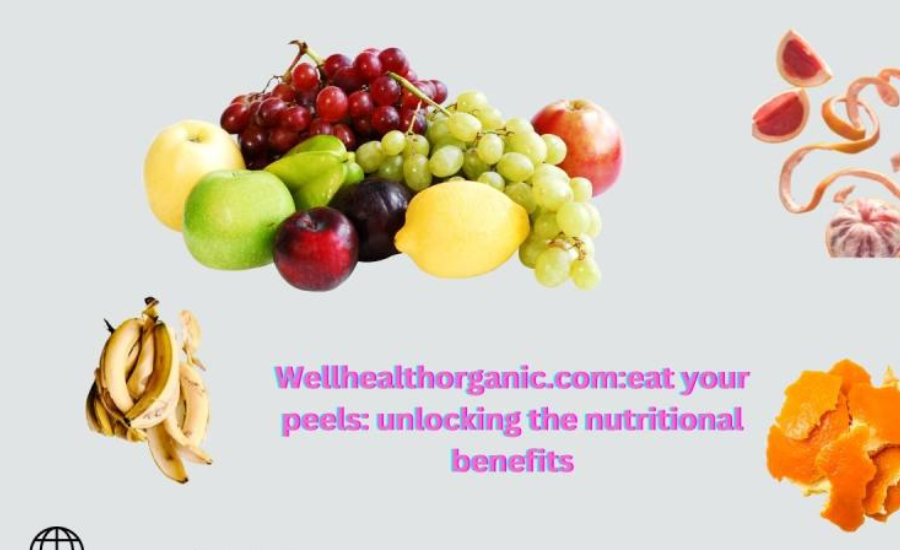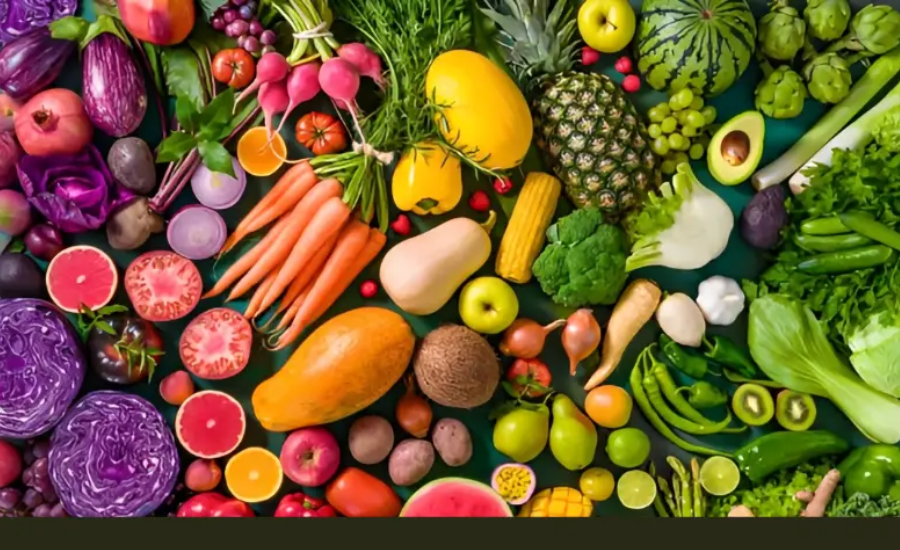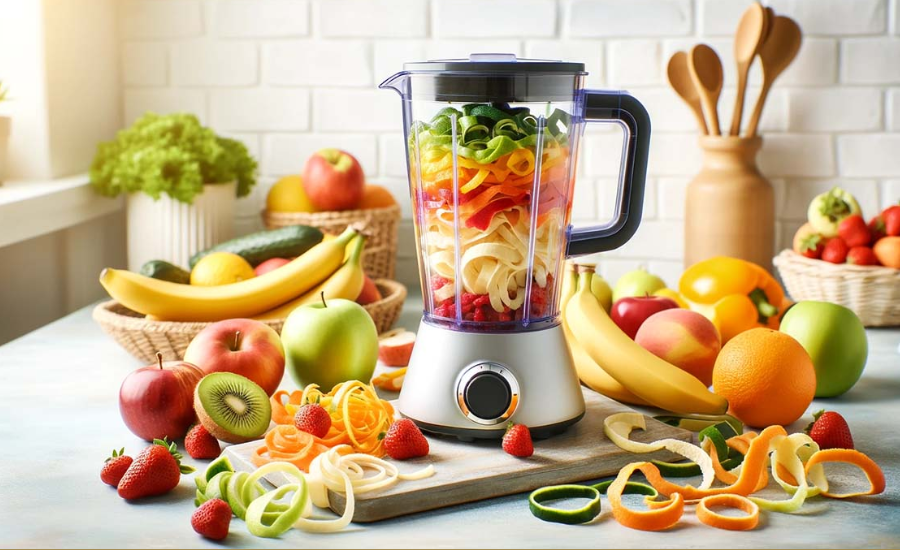wellhealthorganic.com:eat your peels: unlocking the nutritional benefits When it comes to fruits and vegetables, we often discard the peels without realizing the immense nutritional value they hold. Many of us focus solely on the flesh, overlooking the vitamins, minerals, and fiber that reside in the outer layers. The campaign to “eat your peels” is more than just a food trend; it’s a powerful way to enhance your diet, reduce waste, and contribute to a more sustainable world. In this article, we’ll dive into the nutritional treasures hidden in peels and how they can revolutionize your health and lifestyle.
Why Should You Eat Your Peels?

1. Boost Digestive Health
Peels are rich in dietary fiber, which is crucial for maintaining a healthy digestive system. Fiber helps regulate bowel movements, promotes gut health, and keeps you feeling full longer, reducing the chances of overeating. Additionally, certain fibers in peels, like pectin found in apple skin, have prebiotic properties, nourishing the beneficial bacteria in your gut.
2. Disease Prevention Through Antioxidants
Many fruit and vegetable peels are loaded with antioxidants, which combat free radicals in the body. Free radicals are unstable molecules that can damage cells, leading to chronic diseases such as heart disease, cancer, and neurodegenerative disorders like Alzheimer’s. For instance, citrus peels contain flavonoids, which are known for their anti-inflammatory and heart-protective benefits.
3. Minimize Food Waste and Promote Sustainability
By consuming peels, you not only benefit nutritionally but also help reduce food waste. Millions of tons of fruit and vegetable peels are discarded each year, contributing to environmental strain. Incorporating peels into your meals is a simple yet impactful step toward sustainable living.
4. Enhance Culinary Creativity
Peels can add unique textures, flavors, and colors to your dishes. From crispy potato skins to zesty orange peel zest in desserts, the possibilities are endless. You can experiment with peels in smoothies, salads, or even as garnishes, making your meals both delicious and visually appealing.
Nutritional Powerhouses: What Peels To Eat?
1. Apple Peels
Apple peels are rich in fiber, particularly insoluble fiber, which aids digestion. They also contain quercetin, an antioxidant that may help reduce inflammation and support heart health.
2. Potato Skins
Potato skins are packed with vitamins B6 and C, potassium, and iron. They’re a great source of fiber and can be enjoyed in a variety of ways, such as baked or roasted for a crispy snack.
3. Bottle Gourd Peels
The peel of the bottle gourd is loaded with vitamin C, fiber, and antioxidants. This often-overlooked vegetable skin is a boon for those looking to enhance their immune system and maintain healthy digestion.
4. Watermelon Rinds
Watermelon rinds contain an amino acid called citrulline, which is known for improving blood circulation and reducing muscle soreness. Blending the rind into smoothies is a refreshing way to enjoy its benefits.
5. Orange Peels
Orange peels are a powerhouse of vitamin C and contain compounds like limonene, which may have anti-cancer properties. Dry them, grind them, and use them as a flavorful addition to teas or baked goods.
6. Cucumber Peels
Cucumber peels are a good source of vitamin K, potassium, and fiber. They also have antioxidants that support skin health and reduce inflammation.
How To Safely Incorporate Peels Into Your Diet

Before consuming fruit or vegetable peels, ensure they are thoroughly cleaned. Pesticides and dirt can linger on the surface, so washing them under running water and using a brush can help remove any contaminants. For organic produce, the peels are generally safer for consumption as they are grown without synthetic pesticides.
The Bigger Picture: Health And Environmental Benefits
Eating peels is a small yet impactful step toward a healthier lifestyle and a greener planet. By choosing to incorporate peels into your meals, you’re not only optimizing your nutrient intake but also actively participating in reducing food waste. This dual benefit aligns with the global push for sustainable living practices.
Conclusion: Embrace The Peel Power

The next time you’re about to toss out those peels, think twice. They’re more than just kitchen scraps—they’re nutritional goldmines that can significantly enhance your health. By adopting the practice of eating peels, you can unlock a myriad of health benefits while contributing to environmental sustainability. Visit Wellhealthorganic.com for more tips on embracing a healthier, eco-friendly lifestyle. Let’s make the most of every part of our fruits and vegetables and lead a life that’s both nutritious and sustainable.
Frequently Asked Questions wellhealthorganic.com:eat your peels: unlocking the nutritional benefits
- Why should I eat fruit and vegetable peels?
Eating peels provides many health benefits, including a higher intake of fiber, antioxidants, and essential vitamins and minerals. It can improve digestion, boost immune function, and even prevent chronic diseases like heart disease and cancer. Additionally, it helps reduce food waste and supports sustainability. - Which fruit and vegetable peels are the most nutritious?
Many peels are rich in nutrients. Some of the best options include: - Are fruit and vegetable peels safe to eat?
Yes, most fruit and vegetable peels are safe to eat, but it’s important to wash them thoroughly to remove any pesticides, dirt, or chemicals. If possible, choose organic produce for the safest option. - How do fruit and vegetable peels help with digestion?
Peels are high in dietary fiber, which is essential for digestive health. Fiber helps regulate bowel movements, prevent constipation, and promote gut health. For example, apple peels contain pectin, a prebiotic fiber that nourishes beneficial gut bacteria. - What are the environmental benefits of eating peels?
By eating peels instead of discarding them, you help reduce food waste, which is a significant environmental issue. Every year, millions of tons of fruit and vegetable peels end up in landfills. Reducing this waste supports sustainability efforts and lowers your carbon footprint.
Stay in the know with the latest news and updates on Thenewsface.com


